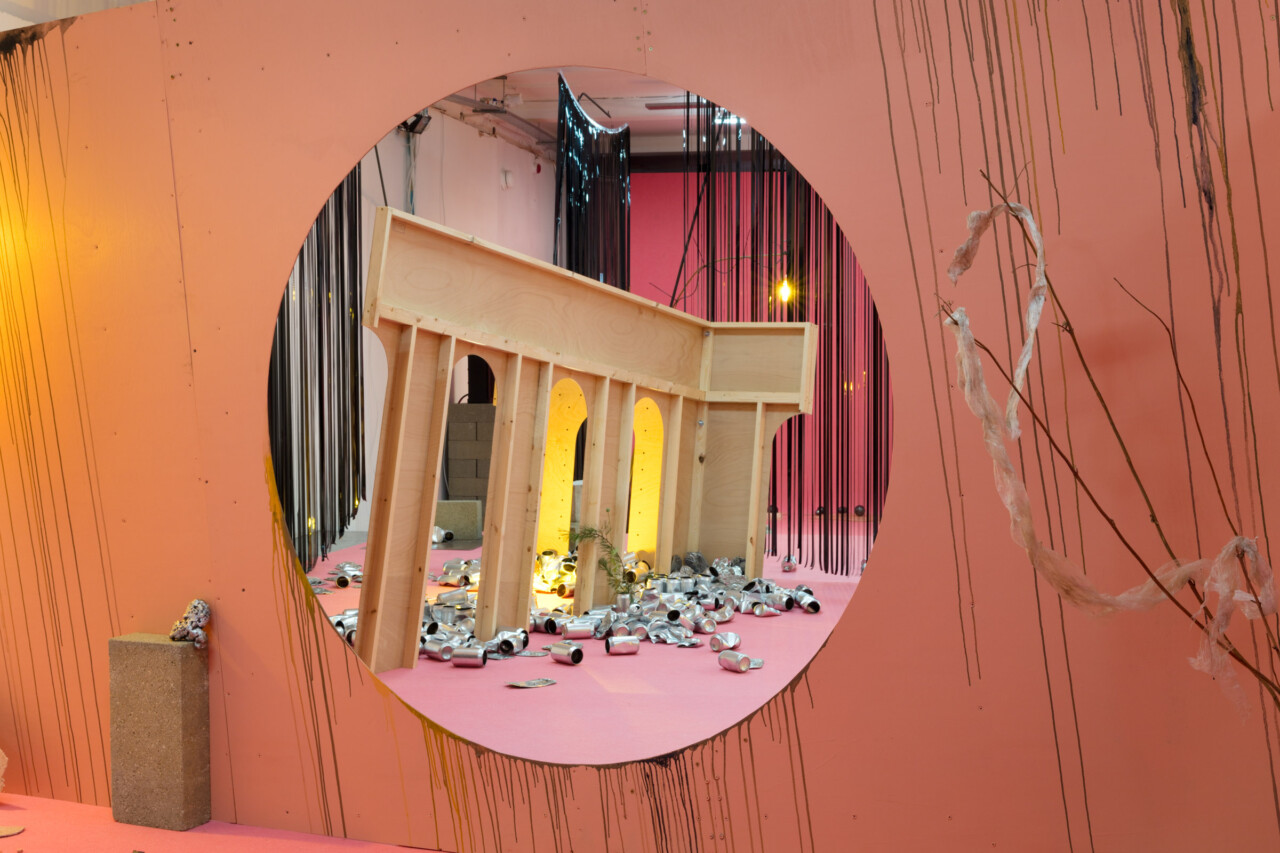


Anne Hardy, Falling and Walking (phhhhhhhhhhh phossshhhhh crrhhhhzzz mn huaooogh), 2017. Photographer: Angus Mill
This week for #CASatHome, we speak to a museum curator about a particularly significant work in their collection. Sarah Brown, Principal Keeper at Leeds Art Gallery, has chosen an installation by the artist Anne Hardy entitled Falling and Walking (phhhhhhhhhhh phossshhhhh crrhhhhzzz mn huaooogh), 2017. Falling and Walking was co-commissioned by the Contemporary Art Society, Outset, Art Night in 2017 and gifted to Leeds Art Gallery in 2018. The acquisition and exhibition of the work for Leeds was supported by The Henry Moore Foundation.
Leeds Art Gallery has been a Member Museum of the Contemporary Art Society since 1927 and we have over 100 works in the collection (143 but not confirmed at moment) that have been acquired through our membership with CAS.
One of the most recent acquisitions is an installation by the artist Anne Hardy entitled Falling and Walking (phhhhhhhhhhh phossshhhhh crrhhhhzzz mn huaooogh), 2017. Falling and Walking was co-commissioned by the Contemporary Art Society, Outset, Art Night in 2017 and gifted to Leeds Art Gallery in 2018. The acquisition and exhibition of the work for Leeds was supported by The Henry Moore Foundation.
Hardy is known for her large-scale installations where objects, light, colour and sound seem to take on a life of their own. These spaces are often photographed and then destroyed or repurposes.
Falling and Walking is a large scale installation where objects, light colour and sound seem to take on a life of their own. In this installation Hardy achieves a degree of magic, and the installation possesses a complexity and pleasure that is unlike anything else. Incorporating audio, sculptural structures, light found and cast objects, it is the first work of this kind to be acquired by a public museum.
It is also the first time that museum visitors can enter an actual space of her making. In the past these were created solely to be photographed and were always destroyed afterwards. Breaking away from this former process has allowed her to expand her working methods and has given her a new dimension to explore.
Falling and Walking draws attention to the fragility of our world, the relationship been the natural elements, weather, nature and the human world and how these connect and coexist. It considers our climate, changing seasons all of which we are currently acutely aware of. The heightened sounds of wind, rain, a tin can being blown in the wind, birdsong.
Hardy finds many of the materials, objects and sounds for her FIELD works on the street: things that have been discarded and have lost their original function. She thinks in the same way about space; places can be both strange and familiar, floating between the real and the imaginary. It is precisely this ambiguity that Hardy captures in her ‘FIELDS’.
They have something magical—something you have to experience but which is also hard to put into words. As Hardy herself says, “they make us aware of ‘the slippery nature of our perception of the world.”
Falling and Walking feels particularly relevant to think about now, as we experience the world immediately around us – we are all aware of heightened sounds of birds, weather, flowers and the season.
The installation was an incredibly ambitious work to exhibit and involved a great deal of support from our front of house team, volunteers and our visitors. It also required a degree of trust between our staff and visitors as audiences were asked to remove their shoes before they entered. The installation could only be experienced by 6 people at any one time, so visitors had to wait and queue to enter.
Whilst it challenged us as an organisation, it is a work that elicited an extraordinary response that changed the way we engaged with both our staff and visitors to the gallery. It is a work that brought teams together as staff were directly involved with audiences and their responses to the work.
Falling and Walking reminds me of the important and vital role that artists play, that collections, organisations and audiences contribute to enabling us to engage with art of our time and how we can experience the world around us.
As we go towards an easing of this period of lockdown what the social spaces of museums and galleries will look like for us all as we return and venture out of our homes.